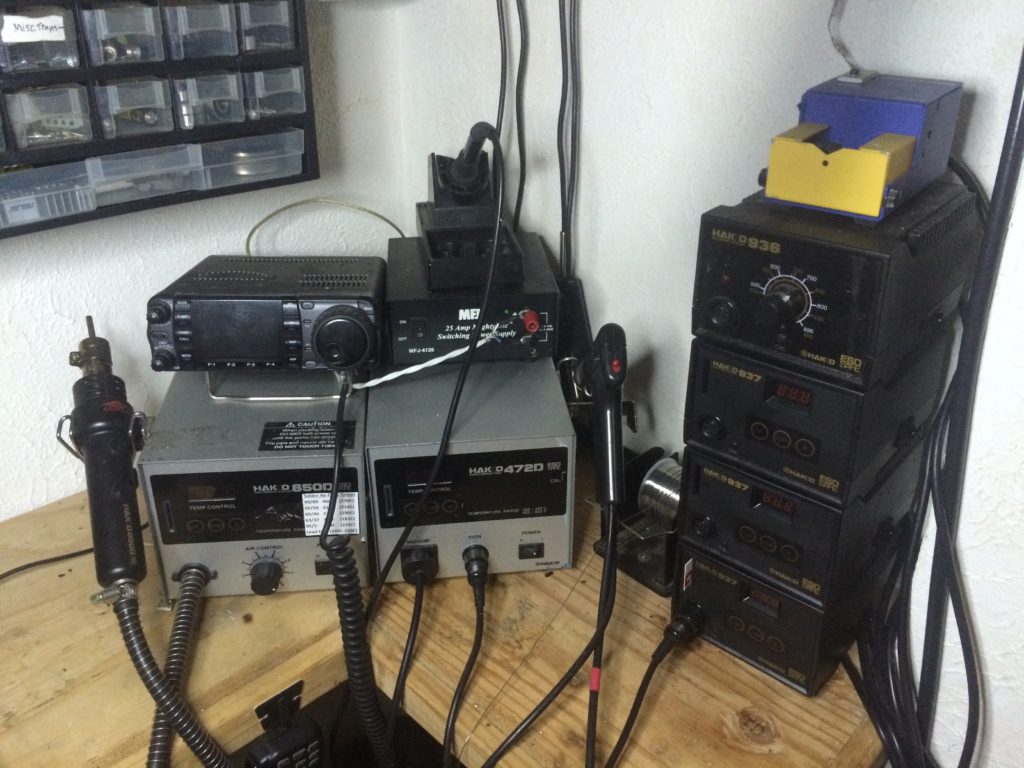That suggests that the front panel switch and possibly the microcontroller are not at fault. The latter is still somewhat problematic since you have not tested all of the microcontroller functionality, but I would not really worry about a defective microcontroller at this point since the counter may be at fault.
That is a completely unwarranted assumption on your part. Once you learn how to use a highly portable oscilloscope it will become your instrument of choice. A DMM is fine for accurate DC and low frequency sine wave AC measurements, but it cannot tell you about slow rise and fall times, noise spikes and a host of other things involving digital or analog signals that vary significantly with time. A narrow pulse with a low duty cycle may not even register on a DMM, but be very visible with a scope. Likewise with a double pulse where a single pulse should be located (or the inverse) which are generally undetectable when using a DMM, etc.This diagnosis is the only thing I'll be using an oscilloscope for ...
I did locate an abbreviated user manual for the DSO 094 if you want to examine it:
http://www.jyetech.com/Products/LcdS...Manual_094.pdf
Here is a potential temporary workaround. If you are sure that you want to replace the CD4024 (which appears to be the culprit at this point) then ground yourself and carefully solder a short wire from the pin 12 pad (at the control board surface) to the pin 11 pad. Now carefully clip pin 12 at the DIP package so that pin 12 of the down counter no longer connects to the control board. At this point the output from the down counter first divisor stage (divide by 2) to the microcontroller input has been disconnected and replaced with the output from the second divisor stage (divide by 4). If the down counter pin 12 output driver was the problem then you should see about 2.5 V on your DMM on pin 11 when in AUTO and commanding a spindle speed with PathPilot. Likewise, using PathPilot to command a spindle speed should vary the actual spindle speed, but it will be slow by a factor of 2X (half speed). If you want 2000 RPM you would need to command 4000 RPM, etc.The standalone unit seems like the better choice, but the long delivery time is unappealing.
If all of that works you can use the mill up to about 2,600 actual RPM by commanding up to 5,200 RPM. Path Pilot may prevent you from commanding anything higher than 5,200 spindle RPM, hence the temporary actual speed limitation. An alternative workaround would be to jumper the down counter pin 12 pad to pin 1 before clipping pin 12. In this case the commanded speed would be 2X higher rather than half speed, but it is also much more problematic since the microcontroller may not handle a 2X higher input frequency correctly, while I would expect it to handle a half speed input frequency since the latter falls well within its normal operating range.
If the above jumper between pin 12 and pin 11 does not work as expected - i.e. the voltage is not near 2.5 VDC on your multimeter and the commanded speed does nothing to vary the spindle speed - then the microcontroller pin input buffer is likely blown and you would need a new microcontroller. The alternative is that pin 12 of the down counter may connect to additional loads unrelated to the microcontroller and one of those is overloading the counter output.
That is not a standalone unit, it needs a computer connection to operate. Hence it is much more of a bench solution rather than a field solution. You still seem to be assuming that whatever instrument you buy will only be used this one time rather than being of any use in the future. For an inexpensive one time use, your original single channel scope kit would work for examining the signal on pin 12 of this specific binary down counter. But it also represents a throwaway solution since that scope is also very limited in capability. It is adequate for single channel audio frequency applications but not a general purpose solution for higher frequency / voltage, or much of anything digital.the model is Hantek 6022BE






 Reply with Quote
Reply with Quote



